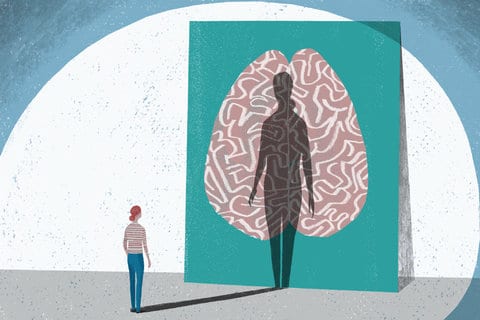There are plenty opportunities in life to feel horrible about oneself.
Nevertheless, if we’re honest about the role the internet plays in our daily lives, we can see that digital media has a particular way of infiltrating the psyche. When we witness individuals establishing cliques to which we do not belong, photos of superstars who appear unrealistically flawless, and influencers whose stratospheric success inspires jealousy and self-doubt, it can accentuate our critical inner voice. Bullying may also become instantaneous and continuous, rather than restricted to a physical workplace or school.
The difference between real life and the internet is that social media platforms convey these sensations to the palm of our hands in a 30-second scroll. The algorithms that control them continue to serve up such stuff, seemingly unable to differentiate between true interest in what we’re seeing and lingering caused by disappointment, irritation, or fury.
This is especially difficult for children and teenagers, who have yet to develop coping skills and experience that creates self-confidence and perspective. That is why many people are upset about how networks like Facebook, Instagram, and TikTok contribute to harmful settings for young people.
While we can’t expect youth to develop the skills they need to navigate these challenges unless we demand fundamental changes from social media companies to improve safety and prioritise well-being over engagements and profits, certain strategies can help reduce the influence of negative, habitual thoughts that are based on faulty or inaccurate assumptions.

These views are referred to as cognitive distortions.
These happen to everyone, regardless of age or internet use, but cognitive distortions are typically exhibited by adolescents in emotional or psychological distress, according to Dr. Willough Jenkins, psychiatrist and inpatient medical director of Rady Children’s Hospital-San Diego. This is especially true when the difficulties are connected to the usage of digital media. Feeling ostracised online, seeing pictures that encourage disordered eating, and being harassed or abused online may all trigger negative feelings.
“If you label your thought, it takes a little bit of the power away from it.”
When you see someone who appears to be faultless, you may have thoughts like: “Oh, I’m so unattractive. I’m completely worthless.” Jenkins describes this as an example of all-or-nothing thinking, which is one of ten typical cognitive distortions. If seeing a hilarious TikTok influencer inspires someone to reflect on their own sense of humour and thinks, “Gosh, I’m not nearly that quick-witted and amusing,” this may be a cognitive error known as discounting the positive since they’ve rejected how they make their friends laugh. After viewing their friends’ pictures, a young user may think to themselves, “I should exercise more” or “I should dress like them.” Because of their scolding, self-blaming character, such words can encourage negative thinking.
Combating cognitive distortions might appear scary or overpowering, but according to Jenkins, the following tactics can be beneficial. Of course, when they believe it is essential, young people should seek professional aid and counselling.

1. Identify Cognitive Distortions
The first step in effectively dealing with cognitive distortions is to recognize and label them. At Rady Children’s, young patients undergoing mental health treatment are encouraged to familiarize themselves with the ten common cognitive distortions for this purpose. According to Jenkins, who is also an assistant professor of psychiatry at the University of California, San Diego, naming these thoughts diminishes their power, enabling individuals to confront and address them instead of succumbing to overwhelming negativity.
2. Evaluate the Evidence
Jenkins advises labeling cognitive distortions by jotting them down when experienced, as this provides clarity in understanding them. Next, she suggests examining the evidence for and against each thought. For instance, if someone believes they are the ugliest person in the world, analyzing the evidence behind this thought can reveal whether it is supported by facts or influenced by fears and anxieties about appearance. Additionally, acknowledging positive aspects and achievements can help counteract negative thoughts, fostering a shift in perspective.
3. Embrace Distraction
Distraction proves to be an effective strategy in coping with cognitive distortions. Engaging in enjoyable activities such as drawing, cooking, or taking a walk can alleviate the pressure caused by these thoughts. As Jenkins notes, thoughts that seem overpowering at the moment tend to lose intensity with the passage of time.
4. Practice Letting Go
If negative thoughts persist despite recognizing them as cognitive distortions and discussing them, Jenkins recommends practicing mindfulness and allowing the thoughts to pass without judgment. This mindful approach creates essential emotional distance.
5. Treat Yourself with Compassion
Treating yourself with the same kindness and support you would offer a friend in distress can soften or eliminate negative thoughts. Speaking to yourself as you would to someone you love can be a powerful way to challenge self-critical beliefs.
6. Be Mindful of Red Flags
Recognizing physical and emotional signs of negative effects from excessive social media use is crucial. Symptoms such as constant use, difficulty falling asleep, anxiety while online, struggles with in-person social interactions, fear of missing out (FOMO), and thumb pain from excessive scrolling serve as reminders to prioritize self-care practices, including meditation and reducing social media exposure.
7. Accept Negative Feelings as Normal
Acknowledging cognitive distortions doesn’t imply suppressing all negative emotions. It’s important to remember that such thoughts may arise from experiencing injustice or cruelty. For children facing racism, bullying, or abuse, the focus should be on addressing and changing the circumstances, not solely on building resilience to endure them.










